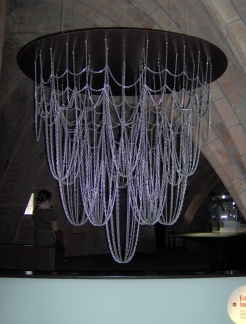The Derivative of Architecture
So I took Calculus as an elective this semester and I feel like the an idiot for doing so. When I’m juggling studio, psych, art history, practicing calculus is the least of my priorities.
But in order to justify my sad decision, I decided to research on how I could use the pains of derivation, integrals and limits into my design.
At the most basic level, calculus is used to calculate the area of an irregular shape or the volume of a solid surface. Both of these can readily be extended to the field of architecture: if you were to build a rectangular structure, calculating the square footage is a simple matter — but if one or more of the walls are curved, for example, you’d need to use calculus to determine the area of the structure. You would also use calculus to figure out how much concrete would be needed to pour those curved walls…
At the advanced level, calculus is essential for the engineering that goes into designing large structures. Another simple example: Suppose you’ve designed a large structure that you want to support on a series of concrete columns. If you wanted to place the columns every ten feet, what diameter columns would you need to build to support the structure? How about if you wanted to place the columns every sixteen feet? Now what size columns would you need?



I learned that calculus is actually an extremely part of design. In actuality, calculus is the reason why we have buildings that curve, Gothic windows with pointed arches, structurally sound buildings and ‘organic’ forms.
I guess in our artsy program it isn’t something we have to focus on too much, but it’s something to keep in mind.
Watch this, though!
Listen to this video while you’re drawing… The things he’s talking about is some pretty cool to keep in mind.
Plus, it makes me feel like I didn’t make a totally stupid decision that may brutally kill my GPA. :).
– TN
leave a comment